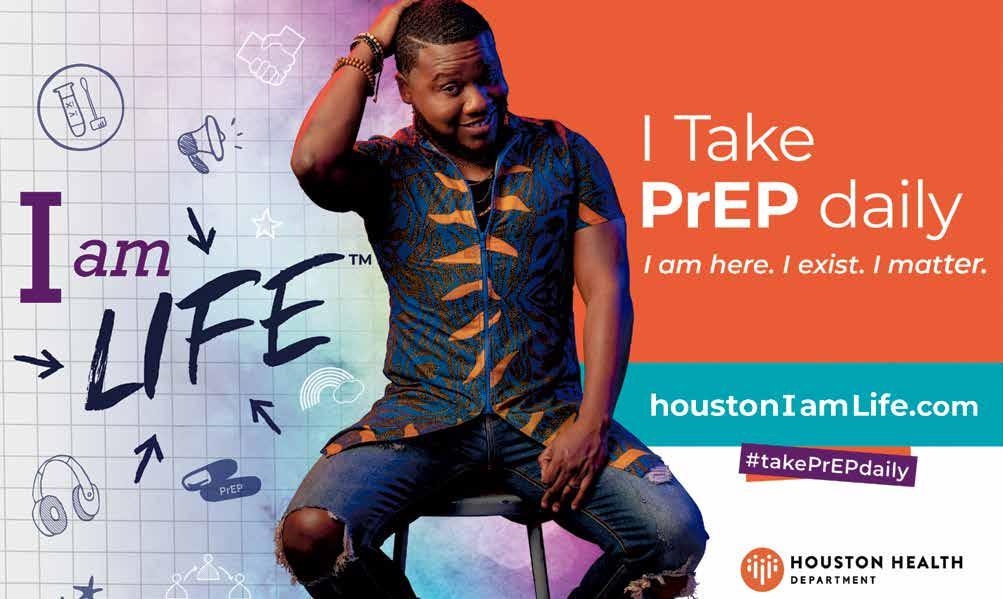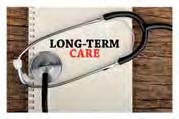









The COVID-19 pandemic not only unmasked the stark racial inequities in the nation’s economic, health care and public safety status quo; it gave rise to a fierce resistance to that status quo and fueled demand for racial justice that grows more intense with each passing month. The National Urban League’s 2021 State of Black America report, “The New Normal: Diverse, Equitable & Inclusive,” charts a path forward as the nation emerges from these “three pandemics.”
“The United States finds itself at a crossroads of racial reckoning,” National Urban League President and CEO Marc H. Morial said. “One path leads backward, toward the “old normal:” a return to the marginalization, discrimination, and segregation that left Black and Brown Americans exceptionally vulnerable to a deadly virus and economic desperation.
“The other path leads toward a nation where police approach the communities they serve as allies and collaborators, and not hostile combatants; where every citizen has equal access to the ballot box, where fatal complications in pregnancy are just as rare for Black mothers as for as white mothers, where the value of a home is not determined by the race of its owner.”
Analysis from research partners
Brookings Institution, Johns Hopkins Center for Health Equity, and Center for Policing Equity not only reveal how structural and institutional racism magnified the devastation inflicted by COVID-19 infection and death, economic collapse and police violence, but also offer a glimpse of a more equitable future.
“The New Normal: Diverse, Equitable, and Inclusive makes the case that dismantling structural racism – identifying and repairing the cracks in our national foundation – will result in more resilient

approach to public safety, the restoration of trust between communities and law enforcement, and a path forward for meaningful change. The Lewis Latimer Plan for Digital Equity and Inclusion is a strategy for leveraging the tools of the information economy to create a more equitable and inclusive society.
Among the findings:
Among the findings:
Higher rates of unemployment, lower household incomes and net worth, and the crushing burden of housing costs left Black Americans uniquely vulnerable to COVID-19’s economic fallout; economic burdens like lack of high-speed internet access and a dearth of health-care facilities in Black neighborhoods contributed more to the vaccine racial gap than hesitancy; and over-policing of Black communities – particularly frequent stops of Black boys, is associated with more crime among those boys, not less.
The report highlights innovative solutions for overcoming racial barriers, such as free and low-cost banking services that allow households to build wealth and a credit history, an approach to treating hypertension that focuses on social needs like housing and transportation, and virtual responses to some police calls.
and dynamic institutions that expand opportunity for everyone,” Morial said.
“To quote a flippant sentiment frequently shared on social media, equal rights for others does not mean less rights for you. It’s not pie.”
The report includes a focus on two major policy proposals the National Urban League developed in 2021 to address racial inequities in public safety and the economy.
The 21 Pillars for Redefining Public Safety and Restoring Community Trust is a comprehensive framework for criminal justice advocacy that takes a holistic
The 2021 report does not include an Equality Index, a calculation of the social and economic status of African Americans relative to whites. Since 2018, the Index is calculated every other year.
The 2022 Equality Index is expected to reflect the upheaval of the pandemic. The report also includes a tribute to the late Vernon E. Jordan, who served as President of the National Urban League from 1971 to 1981, issuing the first State of Black America in 1976. Jordan passed away in March of this year.
“This transitional moment in history would have been familiar to Jordan, who assumed leadership of the National Urban League at a time when the United States was adapting to the sweeping changes of the Civil Rights Era,” Morial said. “We were, as he put it, dealing with the rubble of the walls we tore down in the 1960s. Now we are dealing with the rubble of the walls torn down by COVID.”
The full report is available at www.StateOfBlackAmerica.org.
Source: NNPA



As July was Minority Mental Health Awareness Month, this is the perfect opportunity to continue to educate the public and our community, highlighting health and wellness topics of concern to minorities. This month I want to focus on Black men and counseling, addressing the stigmas attached and how to find the right counselor.
Black men suffer in silence with depression, anxiety, low self-esteem, and a host of other mental health challenges. This is primarily due to the fear of being vulnerable, which is counter to the projected roles of societal norms. Men are expected to conform to gender norms, such as fearlessness, toughness, and avoidance of pain. Men don’t want to be told “man-up,” “stop tripping,” or “just pray.” You do not want to be made to feel that counseling is only for people who are crazy, but instead you need a therapist who demonstrates positive and unbiased support and guidance and understanding of your feelings and cultural experiences.


It is also very helpful to work with a therapist who has first-hand knowledge of past and present social injustices. Therapists with a lack of understanding, empathy, and even experience of the issues impacting the lives of minorities may impair the therapeutic relationship. Distrust in the healthcare system that stems from biased and unequal access to mental health care is also of major concern.
I also want to explain to you how the health insurance process works. In order for insurance to reimburse a provider (mental health or medical) on your behalf, there has to be an assigned diagnosis(es). This means that the provider has to report the diagnosis(es) in accordance with the DSM-V, which lists all mental health categories. When the clinician reports the diagnosis(es) to the insurance company for reimbursement, the information becomes a part of your permanent medical records.
The insurance company owns your records and has the ability to report any requested information to any entity that you authorize access to, especially if required for a job or when changing insurance companies. The only way around this is through self-pay, where you pay out of pocket, which allows your mental health records to remain your property
So, how should men go about finding a therapist? The theoretical approach is very important when looking for a therapist. The first approach is cognitive-behavioral therapy, which involves changing negative, counter-productive messages playing in your mind to alternative, positive thoughts which will then affect the outcome of your behavior. The second approach is person-centered therapy, which allows you, the client, to control the direction of your therapy while the therapist helps to facilitate your journey to self-discovery. And if you should choose a male or female therapist, that is a personal preference.
(as requested) and your therapist’s.
My goal as a therapist is to work with individuals and couples to help bridge the gaps in your interpersonal development that subsequently affects your relationships. If you need support in this area or know someone who does, please visit www.AllenCounselingGroup.com. Feel free to reach out to me at Tami@ AllenCounselingGroup.com or (713) 597-4499.
Source: https://www.mhanational.org/issues/ black-and-african-americancommunities-and-mental-health

The U.S. Food and Drug Administration has granted an Emergency Use Authorization allowing adolescents ages 12-15 to get the COVID vaccine - another giant leap forward in the fight against this coronavirus.
Your 12-year-old is eligible for the COVID vaccine! Here's what a pediatric epidemiologist wants you to know.
"We're elated to be able to protect more people from COVID-19 through vaccination. We understand that parents may have questions before signing their kids up for the vaccine and we're always happy to answer those questions and arm families with the information they need to feel comfortable. The biggest things I want parents to know are that this vaccine is safe, effective and our best shot at beating COVID-19," said Dr. Emily Godbout, epidemiologist and infectious diseases specialist at Children's Hospital of Richmond at VCU.
Dr. Godbout answers some of the most common questions parents have about the COVID-19 vaccine for adolescents.
Is the COVID vaccine dose for adolescents the same as for adults?
Is the COVID vaccine dose for adolescents the same as for adults?

Yes. For the groups approved thus far, the same dose is given no matter the person's age or size. This is really because the vaccine impacts the immune system, rather than muscles, bones or fat, which are what influence a person's weight. As studies continue on younger children, we may find that smaller doses are recommended based on the needs and responses of their immune systems. Are side effects the same in kids and adults?
Are side effects the same in kids and adults?
Which vaccine is available for kids ages 12+?
The FDA's most recent EUA is specifically for the Pfizer-BioNTech COVID-19 vaccine for children 1215 years old. This is currently the only COVID vaccine authorized for people under 18.

The Pfizer-BioNTech vaccine trials showed that side effects observed in the 12-15 age group were generally consistent with those in the 16-25-year-olds. Mild side effects - such as arm pain, fatigue, headaches, muscle aches, chills and fever - are a sign the body is building protection. While they can be annoying, they should go away in a couple days.

How much does the COVID vaccine cost?
How much does the COVID vaccine cost?
How do we know it’s safe?
Before the FDA grants an EUA, vaccines go through a rigorous series of trials. Children's immune systems are different from adults' and they can even vary at different ages. Vaccines are fully tested on specific age groups for their unique stages of development. EUAs are granted for age groups only once the vaccines have proved to be safe and effective. Multiple federal partners are working together to ensure that the COVID-19 vaccines are as safe as possible.
The COVID-19 vaccines were developed rapidly not because corners were cut, but because they were a top priority and, thankfully, research on a COVID-19 vaccine didn't have to start from scratch. Scientists have significant prior experience working with other coronaviruses such as SARS and MERS.
There is no out-of-pocket cost for the COVID vaccine, no matter where you receive it. Vaccine administration fees are covered by insurance, Medicaid, Medicare or the federal government for individuals without insurance.
Where can kids 12 and up get the COVID vaccine?
Where can kids 12 and up get the COVID vaccine?
Many health care providers and pharmacies are providing the COVID-19 vaccine. Contact your child's pediatrician or primary care provider for information about availability, or register with your state's health department to be notified when it's their turn for the vaccine.
Will the COVID vaccine be required for school in the fall?
Will the COVID vaccine be required for school in the fall?
Will the COVID-19 vaccine impact fertility?
There is no evidence that any COVID-19 vaccine causes fertility problems. In fact, many professional organizations support and encourage women who are interested in becoming pregnant to get a COVID-19 vaccine since it offers great protection.
This decision will be up to the individual school districts. For the upcoming school year, it will likely be encouraged rather than required for the authorized age groups. Some colleges and universities, on the other hand, have implemented a COVID vaccine requirement for the 2021-22 academic year. This is certainly something to watch closely as kids and teens prepare for the new school year.
Keep up with the latest COVID vaccine information for kids and teens from Children's Hospital of Richmond at VCU at chrichmond.org.
Source: BPT

ccording to results from a new Commonwealth Fund survey, Americans who have suffered the most during the COVID-19 pandemic are also the most likely saddled with medical bill problems and debt. The Commonwealth Fund, a foundation that promotes a high-performing health care system that achieves better access and improved quality, noted that adults ages 19 to 64 contracted the virus, lost income, or lost their job-based health insurance coverage.
Those individuals also reported higher rates of medical bills and debt problems than people not affected by the pandemic in those ways. Researchers found those who lost income experienced medical bill problems at the highest rates, especially those who also tested positive or became sick with COVID-19 or lost coverage. The report revealed that Black and Latinx adults “face the greatest financial challenges from chronic lack of affordable health care, even as the pandemic eases and more gain insurance coverage.”
More than half (55 percent) of Black and nearly half (44 percent) of Latinx/ Hispanic adults said they had medical bill problems and debt, compared to one-third (32 percent) of white adults. Overall, one-third of U.S. adults said their income fell during the pandemic, but Black, Latinx/Hispanic, and low-income adults were particularly hard hit, the report continued. Forty-four percent of Black adults and 45 percent of Latinx/ Hispanic adults reported a loss of income. Insured and uninsured adults alike struggle to pay their medical bills, but those without coverage face more significant challenges. More than one-third of insured adults and half of uninsured adults said they had a medical bill problem or were paying off medical debt. One-third (34 percent) of working-age adults with employer coverage reported medical bills or debt problems, as did nearly half (46 percent) of adults with individual and marketplace coverage.
Relatively few adults lost job-based health insurance coverage during the pandemic. However, many of those who did were left exposed to health care costs, researchers wrote. The survey, which took place between March 9 and June 8, revealed that just 6 percent of working-age adults lost job-based coverage — whether through their job or that of a spouse, partner, or parent — since the pandemic began. Of those individuals, 67 percent gained coverage elsewhere.
Just over half (54 percent) of people who lost coverage through their job and did not get COBRA were without coverage for three months or less. About 30 percent did not gain insurance until four to 11 months later, and 16 percent were uninsured for longer than a year. An estimated 10 percent of working-age adults
 By d-mars.com News Provider
By d-mars.com News Provider
were uninsured during the first half of 2021 — a smaller share than 2020 estimates from federal and private surveys. The survey findings suggest that more people have gained insurance than lost it since the pandemic began.
Federal efforts to help people maintain their Medicaid coverage, combined with state and federal efforts to encourage people to enroll in the Affordable Care Act (ACA) marketplaces and Medicaid, have increased enrollment in both. The researchers determined that medical debt leaves people with lingering financial problems.
Thirty-five percent said they had used up most or all their savings to pay their bills. Forty-three percent had received a lower credit rating because of their medical debt. More than one-quarter (27 percent) were unable to pay for basic necessities such as food, heat, or rent.
The authors noted several policy options they said could alleviate medical b ills and debt problems and provide relief, including making the temporary American Rescue Plan marketplace subsidies permanent. That c ould reduce the number of uninsured by 4.2 million in 2022, the researchers said.
They also suggested providing Medicaideligible adults in the 13 states that have not yet expanded their program a federal insurance option to cover an estimated 2.3 million uninsured.
Reigning in deductibles and out-of-pocket costs in marketplace plans with new subsidies and rules also should help, they said. More individuals with unaffordable or skimpy employer plans should be allowed to enroll in marketplace plans, the Commonwealth Fund researchers stated. “Although the survey indicates improvement in insurance coverage during the pandemic, it also shows that health insurance in America is not protective enough,” stated Dr. Sara R. Collins, the lead author and Commonwealth Fund Vice President for Health Care Coverage, Access, and Tracking.
“The persistent coverage inadequacy and vulnerability among U.S. working-age adults is compromising their ability to get the care they need and leaving many with medical debt at a moment when they should be recovering after months of financial insecurity.”
Dr. David Blumenthal, the president of the Commonwealth Fund, remarked that people struggled with inadequate health coverage and mounting debt before the pandemic.
“Now, the administration and Congress have an opportunity to ensure not only that all U.S. residents have health insurance but that the coverage is affordable and comprehensive,” Dr. Blumenthal declared.
Source: NNPA
Americans are living longer than ever before, and with continually rising health care costs, the need for a long-term care solution becomes more of a “when” than an “if” situation, according to financial experts, who warn that Americans are largely waiting too long to plan and prepare.
“Many people wait until they’re in their 50s or 60s before beginning long-term care planning, but with costs rising, it’s important to start planning when you’re younger and healthy,” says Heather Deichler, senior vice president, MoneyGuard product management, Lincoln Financial.

• Plan early: Only about 7.5 million people in the U.S. have policies that pay long-term care benefits, according to the American Association for Long-Term Care Insurance, but more than half of Americans turning 65 are projected to need some type of long-term care in the future. This disparity could be due to the fact that many underestimate long-term care costs and expect to rely on savings or Medicare and Medicaid to cover them.
Those in the know -financial planners -- see medical/healthcare costs and long-term care expenses as bigger risks to retirees’ savings than spending too much, inflation or the economy. Indeed, a majority of consumers in a recent survey conducted by Versta Research on behalf of Lincoln Financial guess that a private room in a nursing home costs less than half the realistic estimate. Others may simply feel their good health exempts them from the need to plan at all. But living a healthy lifestyle could mean you’ll live longer and face health-related risks associated with aging.
Being realistic about the possibility your future could involve long-term care and the true costs associated with it can help you plan accordingly and motivate you to get started early.
• Get on the same page as your family: Having a longterm care conversation with loved ones can help you feel confident about your future and help avoid conflict among family members. Share your expectations for daily living, such as how and where you want to receive care. This is a good time to identify who will be responsible for your financial and medical affairs should you become unable to manage them.
• Consult a financial professional: A financial professional can help you get a handle on your financial future and make you aware of all your options, including those that evolve with your needs. They may point you to solutions that can help cover qualified long-term care expenses. Some solutions can offer more options and flexibility with a guaranteed level of protection and the possibility for investment growth. For example, in addition to obtaining care in an assisted living facility or nursing home, you could have the flexibility to receive care at home, including from family members.
Comprehensive long-term care planning with family members and a financial professional now can help ensure everyone is prepared for the emotional and financial decisions that may need to be made in the years ahead.
Source: StatePoint